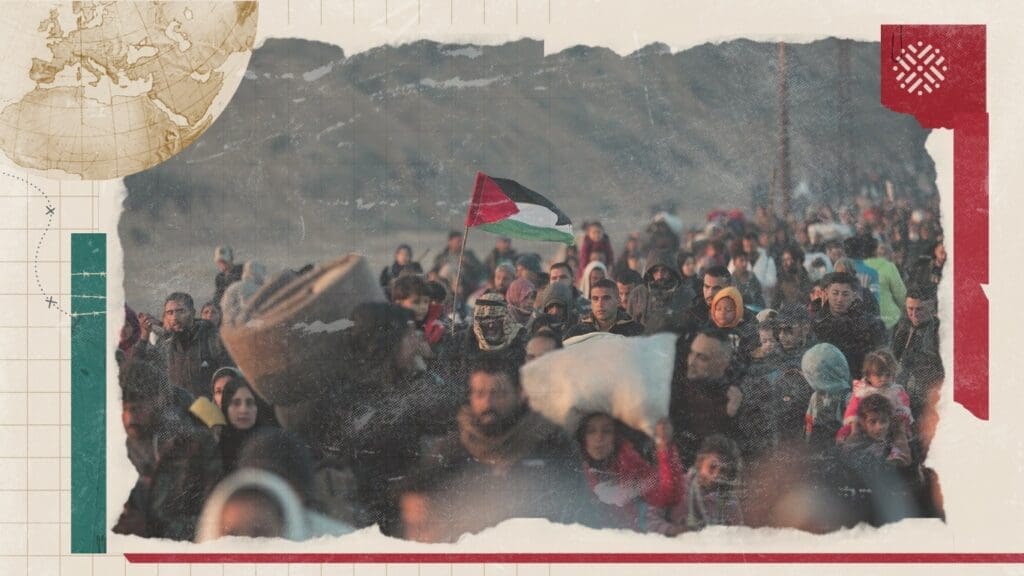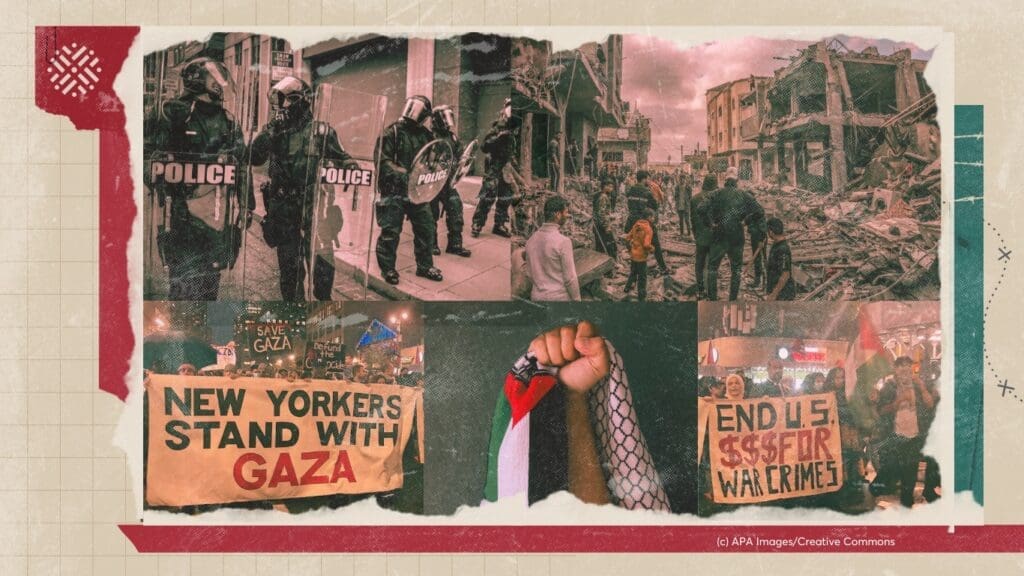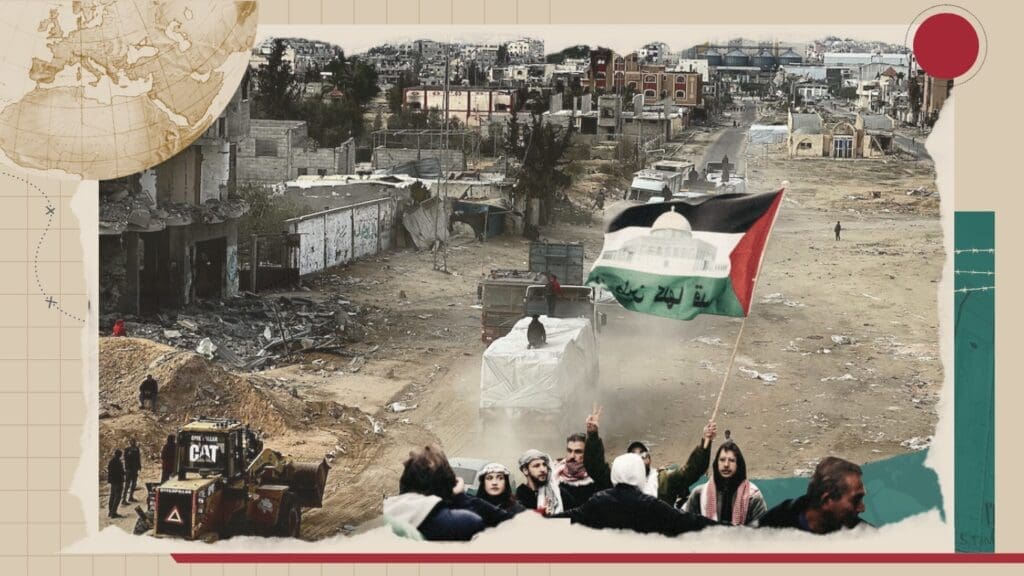
The fate of the Palestinian Authority (PA) has been a subject of constant debate. This section discusses the possibility of the PA’s dismantlement, collapse, or reconfiguration, analyzing the factors that inform each sub-scenario.
Dismantlement
Dismantling the PA is an option that the PA itself, the Israeli regime, and certain international forces can make happen, albeit to varying degrees. This sub-scenario could become likely if agreed upon by two or three actors.
Dismantlement as a Palestinian Action
In a 2013 statement, PA President Mahmoud Abbas threatened to hand over the PA to the Israeli regime so the latter could assume the former’s duties. He and others in the PA have repeated this statement on many occasions to pressure the international community and the Israeli regime to halt Israeli policies and make progress on the two-state solution. These statements indicate that the idea of dismantlement is present, if only as a threat. But importantly, dissolution of the PA in this context means relinquishing its authority and handing it over to the Israeli regime.
This statement by Palestinian political decision makers reflects a crisis: The use of the PA’s dismantlement as a tool to pressure the Israeli regime stems from the PA’s belief that its existence is more necessary for Israel than it is for Palestinians. It reflects a realization that the PA performs a functional role, providing security to Israel and relieving it of the burden of managing Palestinian affairs and needs.
Accordingly, PA leadership overlooks three issues. First, the Israeli regime enjoys the upper hand with regard to the PA, its operations, and the selection of its leaders. Threatening to dissolve the PA is therefore a sign of powerlessness because Israel can maintain the PA even if its leadership refuses to. Second, and relatedly, other entities, including a restored civil administration, can perform the PA’s functions. Third, certain influential groups profit from the PA and have a vested interest in maintaining the status quo. Therefore, the PA dismantling itself is highly unlikely compared to its dismantlement by the Israeli regime.
Dismantlement as an Israeli Action
Israel would not dismantle the PA unless it is certain that it has undermined the emergence of an alternative Palestinian national movement that could defy Israeli occupation, annexation, and settlement expansion in the West Bank. This scenario must be examined with an eye toward the growing influence of the Zionist right in Israel’s decision-making process and the increasing correlation between right-wing ideology and patriotism in Israel. Moreover, the longstanding complicity of Palestinian leadership in the Israeli occupation indicates that the dismantlement option may involve the PA.
Dismantlement as a Joint Action
Dismantlement as a joint action between the Israeli regime and the PA, or between the Israeli regime, the PA, and international stakeholders, is the easiest to envision based on the status quo. The Israeli regime’s dismantlement of the PA, through slow colonial encroachment, requires international support, as demonstrated by US policies under President Trump. However, dismantling the PA as it currently stands cannot be separated from its subsequent restructuring or reconfiguration as a necessary step to ensure this international support.
Impediments
Several factors discourage stakeholders from dismantling the PA. Even if the PA were to dissolve itself, its leadership lacks a vision for post-dismantlement. The Israeli regime, on the other hand, would need to justify the move: Why would it dissolve the PA when it provides the regime with security services and relieves it of managing Palestinian affairs?
The dismantlement of the PA and its security services without an equally efficient alternative risks inciting violence – the brunt of which would mainly be felt by Palestinians. It would also threaten tens of thousands of Israeli settlers in the West Bank. Israeli military intelligence highlighted this risk in 2020, when Brigadier-General Dor Shalom, head of the research department in the military intelligence division of the Israeli army, pointed out that the two most prominent dangers to Israel at present were “the Iranian threat and the collapse of the PA.”
The Israeli regime’s recognition that the incumbent Palestinian leadership does not represent the Palestinian public prevents it from dismantling the PA. That is, Israel is aware that dismantling the PA means unleashing Palestinian movements that have not been able to carry out acts of resistance, particularly in the West Bank, thanks to Palestinian security forces. In Gaza, these movements have also been restricted, albeit to a lesser extent, due to Hamas’s burdens of governance. As such, the dissolution of the PA is of national interest to the Palestinians, and Israel would not want to help bring about a new Palestinian intifada against the occupation. Demands to rebuild the Palestine Liberation Organization (PLO) on new foundations would simultaneously become more widespread, and Israel does not wish to see a revived PLO that transcends the two-state solution. Indeed, as soon as the “new Palestinians” are liberated from the PA, they would fight against the occupation.
Collapse
The collapse of the PA assumes that all internal factors driving popular action against its policies would continue. It further assumes that the popular movement would call for the PA’s dismantlement due to its cumulative failures to address the many issues affecting the daily lives of Palestinians. This sub-scenario is based on the same underlying factors of the first, in addition to two possibilities that might lead the Palestinians away from the dismantlement of the PA.
The first is the rekindling of Arab revolutions. The Arab peoples remain oppressed under authoritarian regimes, and the factors that pushed them to revolt more than a decade ago are still at play. It is thus likely that we will witness a renewed wave of demonstrations that bring about more responsive governments. The Palestinians may be inspired by such an experience, considering that the PA has adopted the same tools of oppression as Arab regimes. In other words, Palestinians may revolt against the PA without a ceiling for their demands. The rallies that took place after the Palestinian security forces’ 2021 killing of Nizar Banat, and the 2022 resurgence of popular resistance under the Lions’ Den group in the northern West Bank, indicate the possibility for a powerful popular uprising.
The second is Palestinian movements joining popular action. In the past few years, popular movements have emerged in Palestinian society without any significant contribution from Palestinian political factions. This sub-scenario assumes the possibility of these factions changing their stance and joining the same path, which would give the movements greater impetus, especially as the PA has failed to hold general elections.
Hence, prolonged popular action by Palestinians, backed by some opposition factions and inspired by Arab revolutions, could eventually lead to the collapse of the PA. The following factors increase the chances of such popular action.
Division
Since the 2006 elections, Fatah and Hamas have failed to mend their division despite numerous attempts, including the signing of the National Accord Agreement in 2006 based on the Prisoners’ Document, the Mecca, Sana’a, Doha, and al-Shati Agreements, as well as the 2021 Cairo dialogue. Political elites in the West Bank and Gaza have been unable to translate these agreements into reality. The failure to enforce the agreements, and the persistence of the division, can be attributed to several factors.
First, Palestinian national dialogue has overlooked the root cause of the division – namely, relations with the Israeli regime. By extension, it has ignored the more important dilemma of governance under occupation, and instead has focused on the details of that governance, such as the distribution of power within PA institutions. However, Palestinian political factions cannot exercise their agreed-upon powers without facing their position vis-à-vis the Israeli regime and the PA’s commitments to it. Reconciliation efforts bring them back every time to this root cause of their division, but the parties continue to fail to address it.
Second, the factions do not implement the vague terms laid out in many of the reconciliation agreements and, instead, debate them. A case in point is the 2007 stipulation in the National Accord Agreement to focus the Palestinian struggle on the territories occupied in 1967; the interpretation of the word “focus” later became the subject of a dispute. In another case, the letter of assignment to the eleventh government in 2007 stipulated that the government “respect” the agreements signed by the PLO. A debate later erupted around the word “respect” and whether it implied commitment or not.
Third, the reconciliation efforts have addressed the demands of regional powers at the expense of the Palestinian people. Indeed, several Arab regimes with their own security and intelligence agendas, especially Egypt, have hosted multiple rounds of dialogue to contain the Palestinian factions.
Corruption
According to a February 2021 opinion poll by Aman Coalition, the majority of Palestinians in the West Bank consider corruption to be Palestinian society’s primary challenge. Cumulatively, Palestinians across the West Bank, including East Jerusalem, and Gaza rank corruption second among four main challenges (alongside economic issues, the occupation, and division). This indicates that rampant corruption could fuel popular action against the PA. Indeed, the PA’s corruption has worsened the living conditions of Palestinians already suffering from high unemployment, low wages, and poor quality of services.
Violation of the Law, Freedoms, and Rights
Since the establishment of the PA, Palestinians have witnessed a widening gap between the discourse calling for a democratic state made up of institutions, and the actual conduct that contradicts this discourse. Disrespect for the law and violation of rights and freedoms have manifested in several forms.
For instance, the PA has contributed to reviving tribal structures, which have replaced the three branches of power in settling disputes between citizens, including financial, criminal, and family disputes. Tribes have recently begun to interfere in public affairs, defining the parameters of public, cultural, and sporting events, and even taking on political roles. This undoubtedly hampers democratization efforts.
The PA has also committed stark violations of human rights and freedoms through repression, including beating, torture, imprisonment, and, occasionally, assassination, in the West Bank and Gaza. Palestinians now fear the PA more than Israeli raids and persecution, as shown in both the monthly and annual reports of the Independent Commission for Human Rights.
Finally, the PA executive has encroached on the legislative and judicial branches. In the absence of a legislative council throughout the years of division, the Palestinian president has exercised legislative powers in violation of the Basic Law, issuing decrees that the legislature originally authorized. The president is supposed to issue decrees only on two conditions: When the legislative council is in recess and in case of a necessity that cannot be delayed. Nonetheless, dozens of decrees have been issued without meeting these conditions. In addition, the president made changes to the judiciary, granting himself further influence through forming the Constitutional Court, appointing judges, and referring judges to retirement. Consequently, he has gained complete control over the three branches of power, effectively eliminating their separation.
Economic and Financial Incapacity
Along with its corruption and violations of human rights and freedoms, the PA has on multiple occasions failed to honor its financial obligations toward Palestinians, suspending salaries more than once and using Israeli and international policies as justification. Nevertheless, Palestinians have come to realize that this incapacity is primarily due to the PA’s economic structure, which depends on the Israeli regime and international aid. This financial failure also derives from the PA’s skewed budget allocations, in which the security apparatus receives the largest share, despite a rise in the crime rate and the deterioration of security and stability. Meanwhile, sectors crucial for strengthening Palestinian steadfastness, such as agriculture, industry, healthcare, and education, receive fewer funds. Moreover, since early 2020, the COVID-19 pandemic has exposed how the PA’s administrative and financial corruption have resulted in poor crisis management.
In addition, two realities increase the chances of the PA’s collapse over the coming years: The fact that there is no Palestinian political movement with a reformist vision for the PA that can be transformed into a program; and the absence of a comprehensive national strategy to confront Zionist settler colonialism. However, a number of factors, outlined below, can prevent this scenario.
Israeli Interference
The Israeli regime understands that popular action against the PA would soon turn toward the regime itself. Large swaths of Palestinians would view a move against the PA as opposition to any compromise with the Israeli regime. Moreover, the PA’s collapse means that Israel would have to reassume responsibility for managing the occupied territories. As such, Israel will spare no effort to enhance the PA’s chances for survival and weaken any Palestinian opposition. Indeed, Israeli security assessments have emphasized the risks of withholding clearance funds from the PA, concluding that failing to transfer the funds ultimately harms Israel.
Polarization and Division
As discussed, a Palestinian popular movement that is joined by opposition factions could drive the collapse of the PA. However, it is also possible that Palestinian political factions would thwart the movement due to barriers among the Palestinian people – the result of years of hateful speech within Palestinian society that has brought about conflicting groups, each trying to monopolize the national project. In other words, a large segment of Palestinians may withdraw from any possible movement if the PA portrays the uprising as merely a Fatah-Hamas conflict over power.
While division can drive popular action, it can simultaneously reduce the chances of a unified movement and undermine the continuity of popular movements working against the PA. Supporters of the governing party would quickly withdraw their endorsement of these movements and even turn against them, questioning their nationalism. Such counteraction, similar to the Arab counterrevolutions, would be supported by the PA tools of oppression and coercion.
Regional Powers
While renewed Arab revolutions remain a possibility, existing regional regimes may consolidate their foundations and boost their efforts to counter forces of reform. These regimes could help maintain the PA in its current form, as the outbreak of a Palestinian popular revolution that topples the PA and turns against the Israeli occupation could again mobilize the broader Arab public in support of the Palestinian cause, bringing Arab governments into new confrontation with their people. Arab support to ensure PA stability could take several forms but would primarily focus on pressuring Palestinian factions to maintain peaceful opposition to, and not clash with, Palestinian leadership. Arab financial support could also resume to ensure that the PA meets its minimum obligations toward the Palestinian public.
Reconfiguration
This sub-scenario assumes the end of the PA’s original purpose, as it transforms from a bridge to statehood to an end in itself. The PA would become a large municipality, managing the affairs of the Palestinians without performing any national role; its powers would not extend to land, resources, or security. In the first stage, its operations would be limited to the West Bank and exclude Gaza, until conditions change. The PA would be more closely linked to the Israeli regime in terms of the economy and security – a situation tied to Israel’s systematic aim to crush Palestinian willpower through PA policies.
The viability of this sub-scenario derives from its slow implementation. Indeed, Israel has worked to reconfigure the PA since its early days – that is, after the 1996 tunnel uprising in Jerusalem and through to the financial and security reform plans during the Second Intifada. As soon as the PA ceases to function according to Israeli wishes, Israel would present an alternative. The factors informing this sub-scenario include the below.
The Transformation from Movements to Political Parties
The establishment of the PA transformed Fatah from a national liberation movement to a ruling party – an undeniable loss given that it was the largest Palestinian movement. Its transformation demobilized a large segment of Palestinians and shifted their focus to protecting the PA, which became Fatah’s podium and fortress. Meanwhile, Hamas joined the PA through the Palestinian Legislative Council (PLC) at the end of the Second Intifada, and though it did not fully embrace the character of a political party, it was forced to restrain its actions and resistance as required by its new governing role. The US administration’s vision for the 2006 elections was thus fulfilled as Hamas’s participation was a means to contain and gradually change it.
Security Coordination
Continued security coordination between the PA security forces (PASF) and the Israeli regime suggests that several Palestinian parties are willing to ensure that the coordination continues, and may be willing to do so as a functional authority that does not aspire for statehood, but rather seeks to ensure stability. The resultant comfortable lifestyle would continue to subdue Palestinians who have adapted to it and who are willing to compromise to maintain it under the mottos of pragmatism and strengthening steadfastness. The call for statehood could continue in this scenario, but only as a slogan.
Revival of the Civil Administration and Communication with the Public
Palestinians in the West Bank have witnessed systematic Israeli attempts to collapse the barriers between Palestinians and Israeli occupation forces, and to open direct communication channels. This communication has taken several forms, including “security sweeps” that involve Palestinians applying for permits, through in-person meetings with Israeli military commanders, in order to move between the West Bank and 1948 territories for work purposes. In addition, posts on social media show that some Palestinians do not shy away from complimenting Israeli occupation forces to obtain a permit.
Such modes of communication are particularly dangerous, as they normalize the Israeli regime as an ordinary authority that should be courted rather than opposed. This position entails abstaining from political action for fear of losing privileges bestowed by the Israeli regime. Regardless of how many Palestinians are in this camp, they show the Israeli regime’s success in producing the “new Palestinian” who disagrees with and questions the feasibility of resistance. For some, the enjoyment of small privileges is sufficient to adapt to Israel’s restrictions, and even to acquiesce to Israel’s annexation schemes, as they believe that annexation would facilitate their movement and help make their privileges permanent. These internal disputes among Palestinians make the Israeli regime’s mission easier, as they distract Palestinian movements from obstructing Israeli policies. As for the PA, it is unable to disengage from or defy the Israeli regime because of its fragile structure that exists at Israel’s will.
Israel’s Normalization with the Region and International Support
In recent years, the setback of the Arab revolutions and Arab regimes’ securing of US assent in exchange for diplomatic and economic normalization with the Israeli regime has created new opportunities to squash Palestinian resistance. Israel is capitalizing on these new agreements with the goal of ending the Palestinian cause without Arab objection – a quest that has not been successful at the popular level. However, the continuance of this campaign without Palestinian counteraction could create a “new Arab” akin to the “new Palestinian.” If successful, these efforts would bring the Israeli regime closer to eliminating the Palestinian dream of statehood.
This scenario is the most probable, as it retains the PA as a tool to control Palestinian society. It only faces two obstacles: The persistence of rejectionist anti-occupation Palestinian movements with modest capabilities, which could gradually disappear given the factors cited above; and the fact that some right-wing Zionist movements will not accept any Palestinian presence, even in the form of a large municipality that provides more services to the Israeli regime than it does to Palestinians. Such extremists make it difficult for the Israeli regime to collaborate with Palestinians – even those of the “new Palestinian” type.











